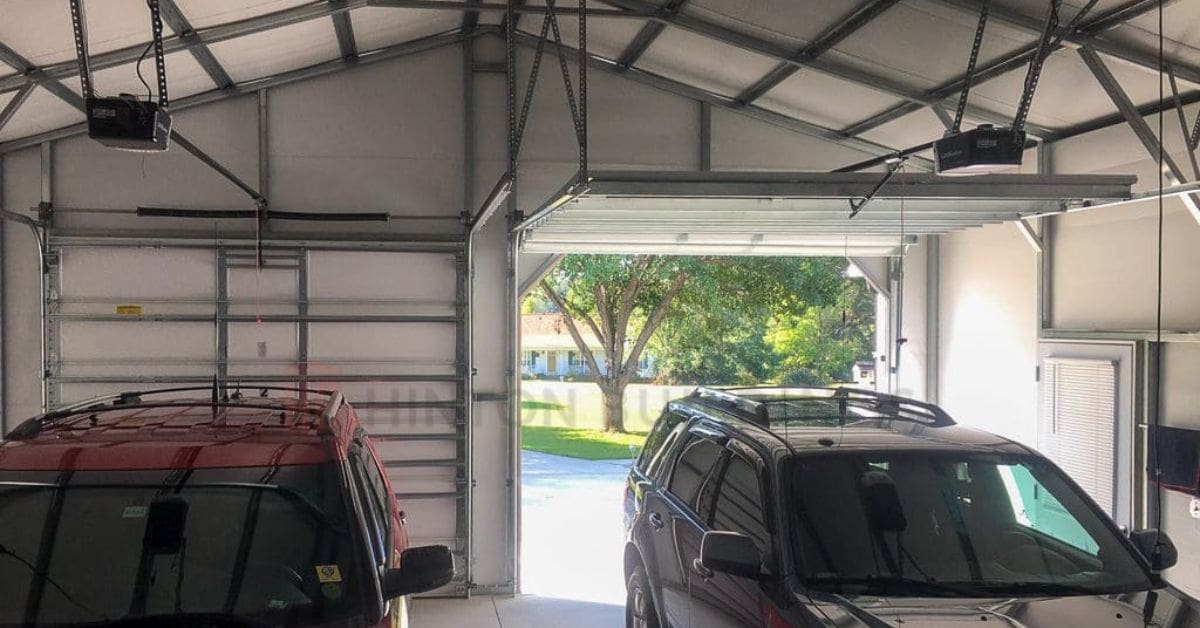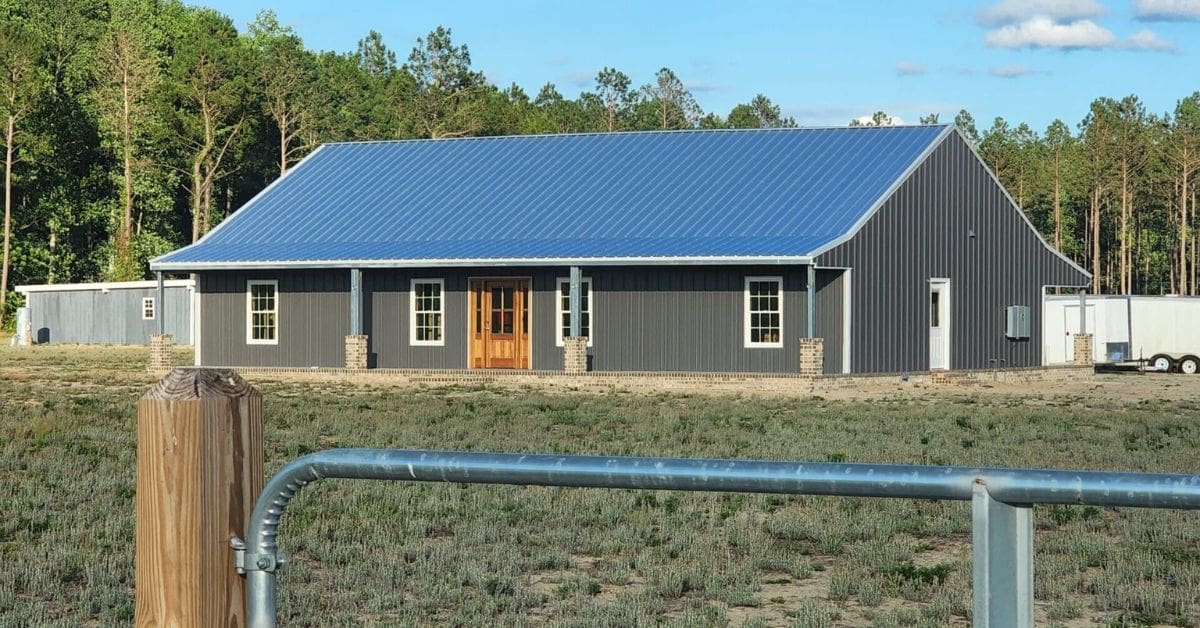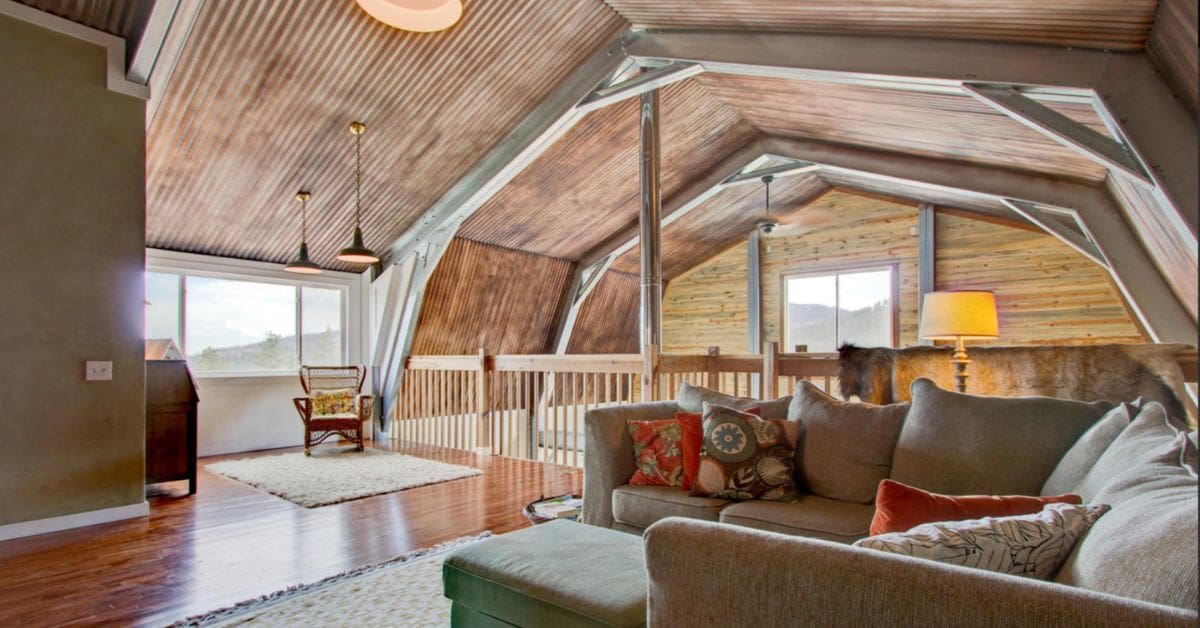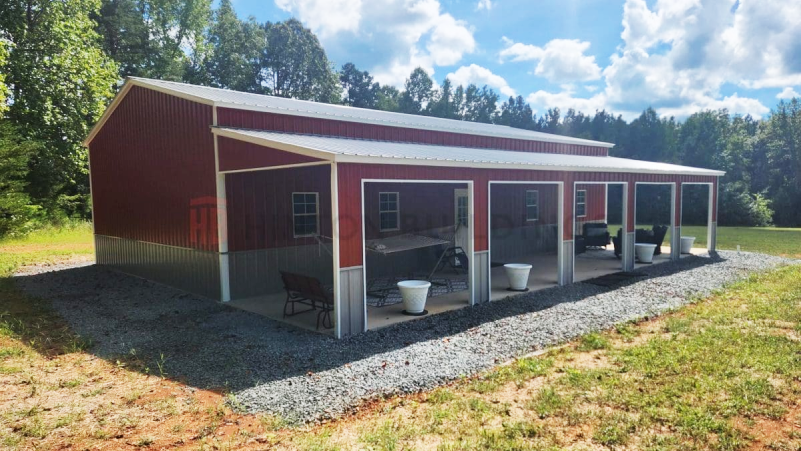
Metal buildings have come a long way since their inception. Initially used for basic storage and industrial purposes, these structures have evolved into versatile, efficient solutions in modern construction.
Today, metal buildings are popular choices for businesses and homeowners alike. In this comprehensive guide, we’ll discuss what you should know about metal buildings and offer key advice to anyone in the field.
Metal structures are generally more affordable to construct than traditional buildings. They require fewer materials, and these materials are high-quality and designed to last. The streamlined construction process also results in significant savings on labor costs, offering exceptional value for your investment over time.
Metal buildings are known for their durability. They can withstand severe weather—including rain, snow, extreme winds, and earthquakes—better than other buildings. Metal’s resilience ensures that these structures are long-standing and reduces the need for frequent repairs and replacements.
In an era when sustainability is more critical than ever, metal buildings stand out as eco-friendly choices. Most metal buildings are made from recycled materials, and they can be recycled again at the end of their life cycles. Additionally, metal buildings are more energy-efficient because of their great insulation properties, which lower heating and cooling costs.
Metal buildings are extensively used in commercial settings. From warehouses to retail stores to office spaces, their versatility makes metal buildings suitable for various applications. Their quick construction time and cost efficiency are appealing to business owners looking to swiftly expand or establish new locations.
Farmers and agricultural businesses also benefit from metal buildings. These structures are ideal for storing equipment, housing livestock, and protecting crops. The durable metal material can withstand the rigors of farm life, from exposure to the elements to housing heavy machinery.
Residential properties are less commonly made of metal. Nonetheless, metal is becoming increasingly popular for residential use.
Modern design techniques allow for aesthetically pleasing homes that are both dependable and energy efficient. Homeowners are drawn to the low maintenance requirements and the potential for unique, customizable designs that metal buildings offer.

One of the standout features of metal buildings is their customization potential. Metal building designs are configurable to meet the needs of commercial, agricultural, or residential environments. You can choose the size, shape, and layout that best suits your requirements, ensuring that the building perfectly aligns with your vision.
Gone are the days when metal buildings were considered unsightly or industrial-looking. Today, you can create a design that matches various architectural styles and aesthetic preferences, from sleek, modern finishes to rustic, barn-like appearances. The possibilities are endless.
Metal buildings are also adaptable to include functional elements. Whether you need specialized ventilation systems, additional insulation, a unique entryway, or custom windows, these buildings can be equipped with all types of features to enhance their usability and comfort. This level of customization ensures that your metal building serves its intended purpose.
The construction of a metal building begins with thorough planning. After you establish your design preferences, the building blueprints will be composed to comply with local building codes and regulations. Acquiring the necessary permits is a crucial step that you must complete before construction commences.
Once the planning and permits are in place, the assembly process can begin. Metal buildings are typically prefabricated, meaning that most components are manufactured off-site and then assembled on location. The prefabrication process greatly reduces construction time and on-site disruptions.
After the main structure has been assembled, the final touches—such as customized windows, doors, and interior finishes— can be incorporated. The result is a fully functional structure that’s ready for use in a fraction of the time it would take to construct a traditional wood-framed building
Regular maintenance is essential to ensuring the longevity of your metal building. Routine inspections can identify potential issues early on. Pay attention to signs of rust, corrosion, or structural wear. Promptly addressing these problems can extend the life of your building as well as prevent more significant damage.
Keeping your metal building clean is another crucial aspect of maintenance. Every few months, wash the exterior to prevent the buildup of dirt and debris, which can cause corrosion. Additionally, maintaining the building’s interior—including any installed systems and equipment—ensures the building remains safe and functional.
Despite a metal structure’s durability, repairs are invevitable. Whether it’s a minor fix or an extensive structural adjustment, immediately addressing every necessary repair is vital to upholding the building’s integrity. Experienced professionals can guide you through the repairs and conduct the project correctly.

The future of metal buildings is bright, with numerous technological advancements on the horizon. Innovations in materials science are leading to stronger, more durable metals, while advancements in prefabrication techniques are making the construction process even more efficient. These developments promise to further enhance the performance and appeal of metal buildings.
Market analysts project continued growth in the metal building sector, driven by increasing demand for sustainable, cost-effective construction solutions. This growth is expected to be particularly strong in the commercial and residential sectors as more businesses and homeowners recognize the benefits of metal buildings.
Efforts to develop even more eco-friendly materials and construction practices are already underway. This commitment to sustainability aligns with broader industry trends and consumer preferences. R ensures that metal buildings remain relevant, attractive options.
Metal buildings are compelling combinations of cost efficiency, durability, and sustainability. Their versatile nature makes them suitable for a wide range of applications alongside the evolving advancements in design and construction technology. The potential of metal buildings promises even greater benefits in the future.
If you’re considering a metal building for your next project, now is the time to act. Understanding what you should know about metal buildings gives you all the information you need to move forward. You’re ready to ensure that your metal building investment turns out precisely how you want and that the structure lasts for its maximum expected life.
